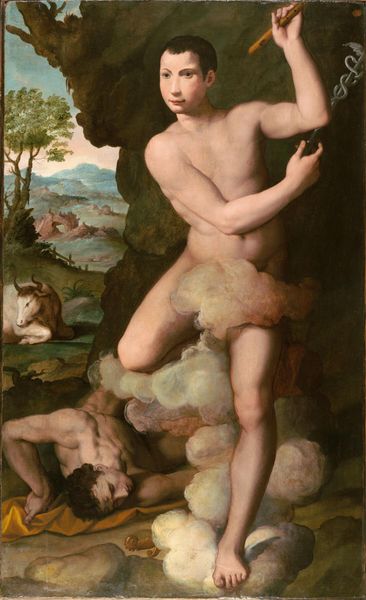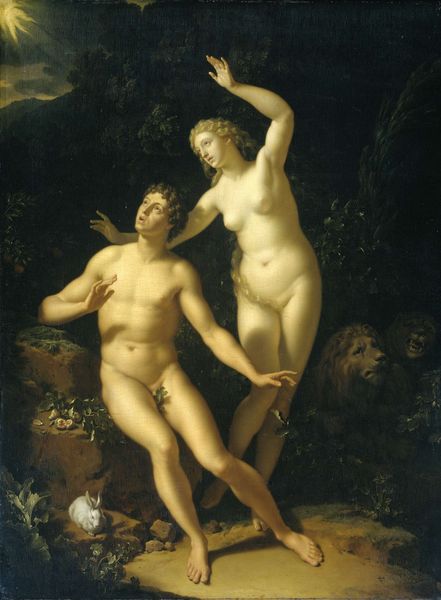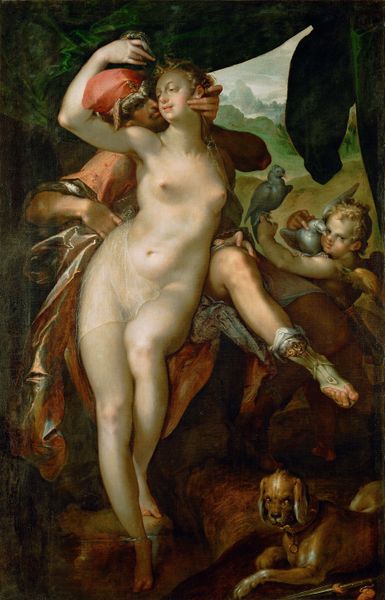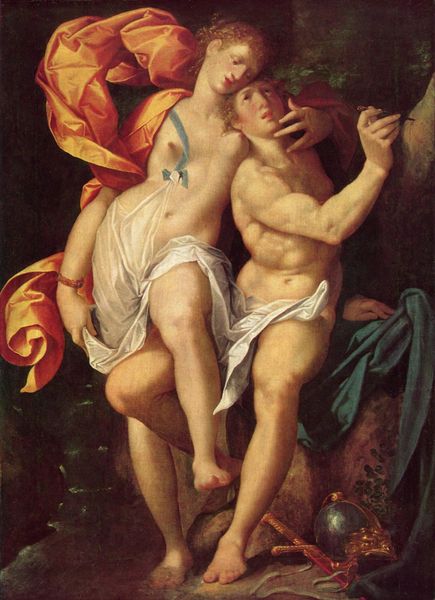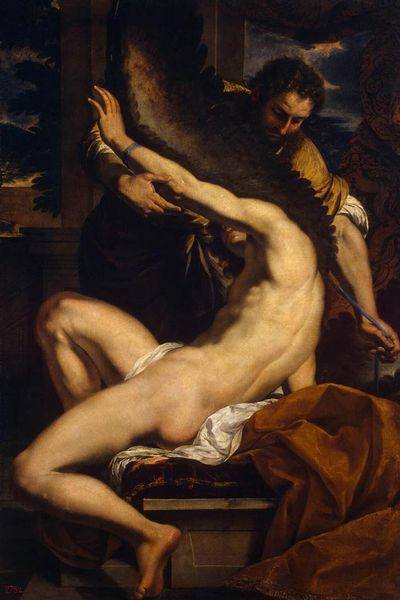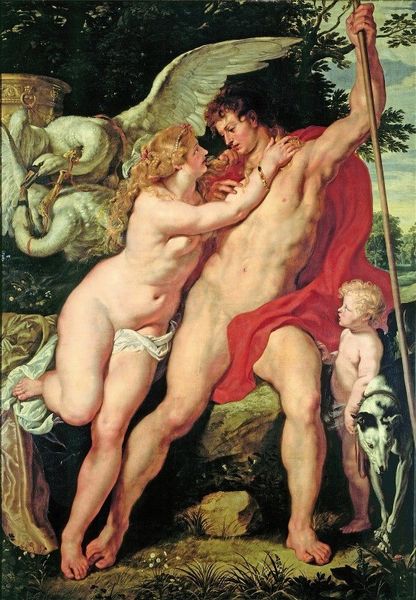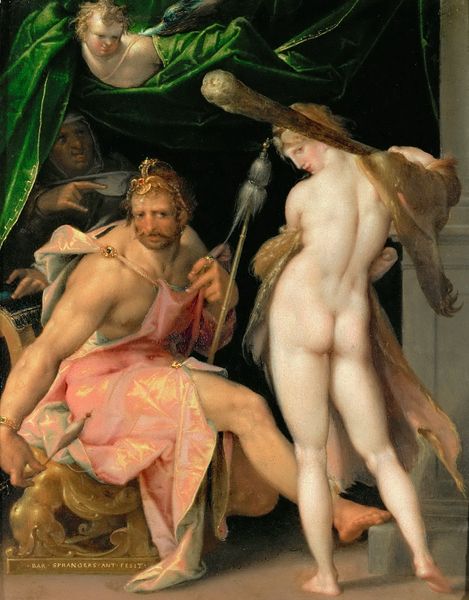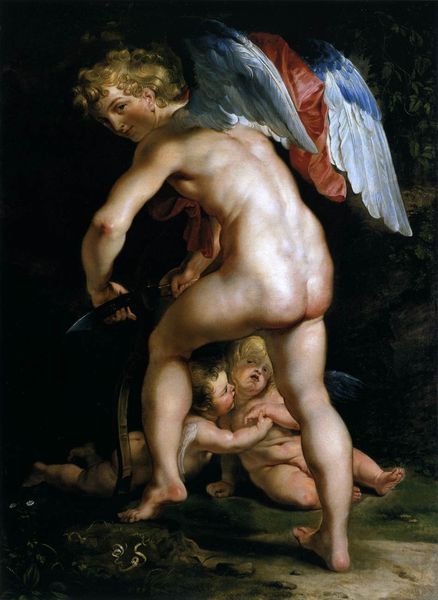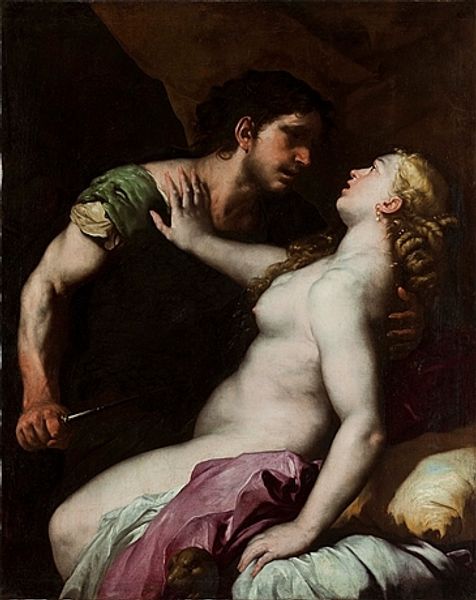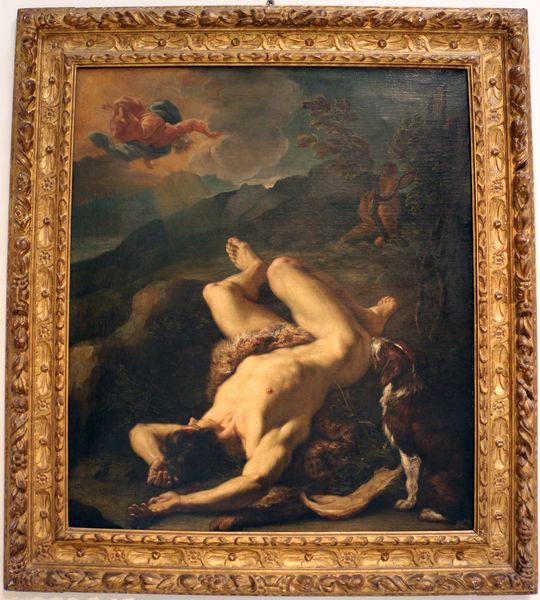
painting, oil-paint
#
portrait
#
allegory
#
baroque
#
painting
#
oil-paint
#
christianity
#
mythology
#
human
#
history-painting
#
nude
#
portrait art
#
christ
Dimensions: 129 x 94 cm
Copyright: Public domain
Editor: Here we have Caravaggio's "John the Baptist," painted around 1602. The sitter, almost merging with a ram, looks directly out at the viewer. What a curious take on the subject, almost unsettling in its directness and the strange combination of sensuality and innocence. How do you read this work? Curator: Well, immediately the lamb jumps out, of course. Beyond its physical presence, it is rich with symbolism; traditionally, it represents Christ's sacrificial role, a visual premonition of his fate. This ties directly into John the Baptist as a figure foreshadowing Christ’s arrival. Editor: I see... so the symbols speak to the future? Curator: Absolutely. But consider the cultural context too. Caravaggio often portrayed religious figures with a striking realism, sometimes bordering on the vulgar. His John isn’t an idealized saint, but a vulnerable human, youthfully entwined with the symbolic lamb. Do you think this subverts or reinforces religious narratives? Editor: It definitely complicates it! The sensuality feels almost at odds with the sacred nature of the subject, doesn’t it? Curator: Precisely. But Caravaggio thrived in that tension. The painting uses familiar images to create emotional power, almost triggering a personal and intimate reflection of faith. Editor: It's incredible how much depth can be packed into what seems like a simple portrait. I'll definitely look at religious art differently now. Curator: That's the beauty of symbolic imagery; it keeps speaking to us across the centuries.
Comments
No comments
Be the first to comment and join the conversation on the ultimate creative platform.
